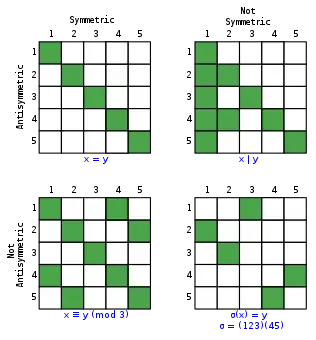| Transitive binary relations | ||||||||||||||||||||||||||||||||||||||||||||||||||||||||||||||||||||||||||||||||||||||||||||||||||||||||||||||||||||||||||||||||||||||||||||||||||||||||||||||||||||||||||||||||||||
|---|---|---|---|---|---|---|---|---|---|---|---|---|---|---|---|---|---|---|---|---|---|---|---|---|---|---|---|---|---|---|---|---|---|---|---|---|---|---|---|---|---|---|---|---|---|---|---|---|---|---|---|---|---|---|---|---|---|---|---|---|---|---|---|---|---|---|---|---|---|---|---|---|---|---|---|---|---|---|---|---|---|---|---|---|---|---|---|---|---|---|---|---|---|---|---|---|---|---|---|---|---|---|---|---|---|---|---|---|---|---|---|---|---|---|---|---|---|---|---|---|---|---|---|---|---|---|---|---|---|---|---|---|---|---|---|---|---|---|---|---|---|---|---|---|---|---|---|---|---|---|---|---|---|---|---|---|---|---|---|---|---|---|---|---|---|---|---|---|---|---|---|---|---|---|---|---|---|---|---|---|
| ||||||||||||||||||||||||||||||||||||||||||||||||||||||||||||||||||||||||||||||||||||||||||||||||||||||||||||||||||||||||||||||||||||||||||||||||||||||||||||||||||||||||||||||||||||
All definitions tacitly require the homogeneous relation be transitive: for all if and then |
In mathematics, a binary relation on a set is antisymmetric if there is no pair of distinct elements of each of which is related by to the other. More formally, is antisymmetric precisely if for all
or equivalently,
The definition of antisymmetry says nothing about whether actually holds or not for any . An antisymmetric relation on a set may be reflexive (that is, for all ), irreflexive (that is, for no ), or neither reflexive nor irreflexive. A relation is asymmetric if and only if it is both antisymmetric and irreflexive.
Examples
The divisibility relation on the natural numbers is an important example of an antisymmetric relation. In this context, antisymmetry means that the only way each of two numbers can be divisible by the other is if the two are, in fact, the same number; equivalently, if and are distinct and is a factor of then cannot be a factor of For example, 12 is divisible by 4, but 4 is not divisible by 12.
The usual order relation on the real numbers is antisymmetric: if for two real numbers and both inequalities and hold, then and must be equal. Similarly, the subset order on the subsets of any given set is antisymmetric: given two sets and if every element in also is in and every element in is also in then and must contain all the same elements and therefore be equal:
A real-life example of a relation that is typically antisymmetric is "paid the restaurant bill of" (understood as restricted to a given occasion). Typically, some people pay their own bills, while others pay for their spouses or friends. As long as no two people pay each other's bills, the relation is antisymmetric.
Properties

Partial and total orders are antisymmetric by definition. A relation can be both symmetric and antisymmetric (in this case, it must be coreflexive), and there are relations which are neither symmetric nor antisymmetric (for example, the "preys on" relation on biological species).
Antisymmetry is different from asymmetry: a relation is asymmetric if and only if it is antisymmetric and irreflexive.
See also
- Reflexive relation – Binary relation that relates every element to itself
- Symmetry in mathematics
References
- Weisstein, Eric W. "Antisymmetric Relation". MathWorld.
- Lipschutz, Seymour; Marc Lars Lipson (1997). Theory and Problems of Discrete Mathematics. McGraw-Hill. p. 33. ISBN 0-07-038045-7.
- nLab antisymmetric relation